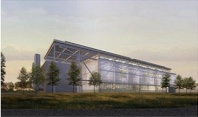By Jennifer Hayward, Sustainability Coordinator & Anna Scott, Energy Analyst, Lane Community College
(This article appears in the November, 2012 issue of The ACUPCC Implementer)
Lane Community College established a revolving loan fund in 2006, the only one of its kind at a community college, to pay for energy conservation and renewable energy projects through utility carryover. The fund, called theEnergy Carryover Fund, realizes savings when current year electricity and natural gas expenditures are less than current year budget. Additionally, rebates and other incentives for energy-focused projects can be deposited into the Fund, helping to finance more projects in the future. The Fund is managed and implemented by Lane’s full time Energy Analyst, Anna Scott, and currently stands at $122,000.
Annual budgets for electricity and natural gas are determined using an energy use index calculation for the baseline year of 2004-05 and the current year’s prices. Money is transferred to the Carryover Fund if Lane is purchasing less energy per square foot because of efficiency, conservation, and on-site renewables than in the baseline year.
Lane’s Energy Analyst plans the Fund’s projects in collaboration with faculty and students in its Energy Management and
Read more





